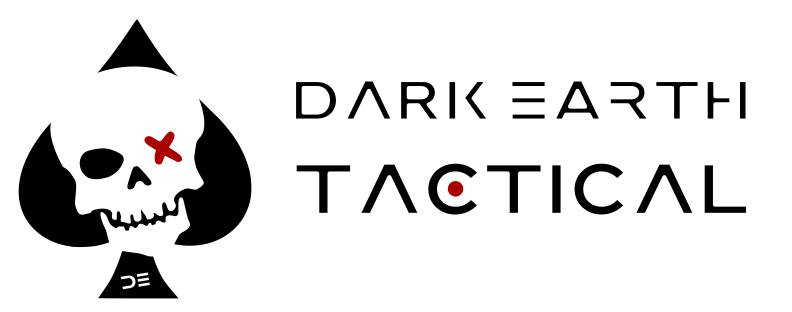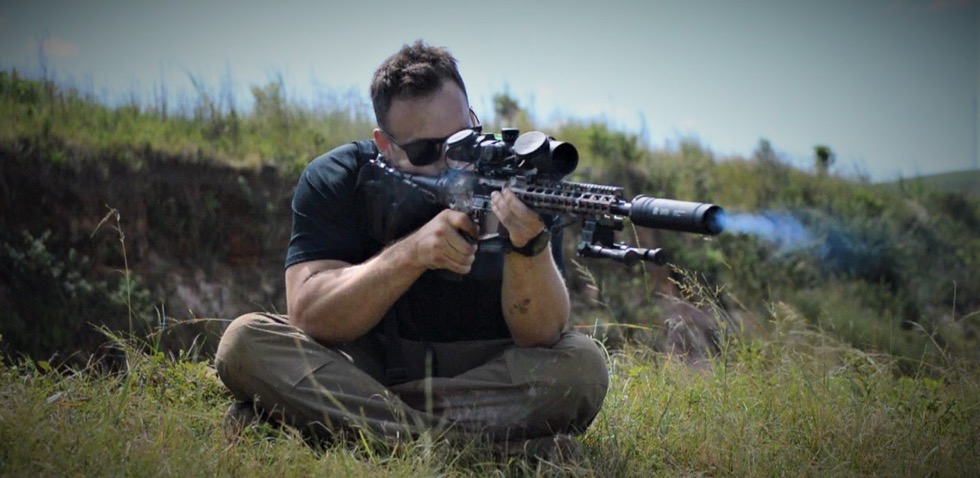The suppressor, otherwise known as a silencer or sound moderator, is a muzzle device that attaches to the end of a firearm and offers a number of advantages when used correctly. I’ve had many people ask me over the years whether it’s worth buying and using a suppressor or not. I’ve also heard many misconceptions floating about on how a suppressor can increase velocity and range, or eliminate sound all-together.
So what exactly does a sound suppressor do, and what are the benefits of using one?
The suppressor is a muzzle device that uses a series of internal sound baffles which slows and cools the escaping propellant gasses. This process reduces the intensity of the rifle’s muzzle blast; both the audible sound and visible flash. Other advantages include a reduction in felt recoil and jump angle, which all combine to provide the shooter with a more pleasant shooting experience.
By properly understanding how a suppressor works, as well as the advantages and disadvantages of using one, you’ll be able to make a well informed decision as to whether you should buy one or not. Although let’s face it – you probably should!
So How Does a Suppressor Work?
First off, it is important to understand that a suppressor (or silencer) doesn’t actually make a firearm silent. Although it may do so in Hollywood films, it certainly doesn’t in reality. Instead, the suppressor reduces one out of three sounds that are produced when a firearm is discharged, that being the muzzle bast.
When a firearm is discharged, it makes three separate noises:
- Mechanical Sound – this occurs from the hammer making contact with the firing pin, and the weapon being reloaded once the shot is fired. This sound can be reduced by using bolt action rifles.
- Muzzle Blast – the muzzle blast and flash are caused by the combustion products of the gunpowder, and any remaining unburned powder mixing with the ambient air. This causes a loud bang, which can be dampened by using a suppressor.
- Sonic Boom – this is the sound that the bullet makes when breaking the sound barrier, which can be removed by using subsonic ammunition that travels below the speed of sound.
The Advantages of Using a Rifle Suppressor
The Pros:
- Sound – having a suppressor fitted safely allows the shooter and those around to fire the weapon without the need to wear hearing protection. This increases situational awareness while also reducing noise complaints caused by larger calibers.
- Muzzle Blast – by reducing both the sound signature and visible flash, a suppressor reduces overall ground signature. This can be extremely helpful when used in a military environment, whereby enemy are no longer able to locate the shooter by visible muzzle flash or sound.
- Recoil – the suppressors internal baffles help to greatly reduce felt recoil, in some cases by up to 50 percent. This allows for faster follow up shots, while also allowing the shooter to better observe his fall of shot on target, as there is far less disturbance to the sight picture.
- Accuracy – the suppressor promotes accuracy in a couple of ways. Firstly, the added weight reduces jump angle, which allows for a smaller point of impact shift when changing firing positions. Secondly, the reduction in felt recoil is beneficial to novice shooters who may otherwise suffer from flinching, which is an error in trigger control whereby the shooter involuntarily tenses his muscles to counter the felt recoil, and in doing so moves the position of the rifle just before the shot is released.
Fitting a suppressor does not increase velocity, at least not enough to notice any difference in your effective range.
10 Shooting Myths and Misconceptions Debunked
The Cons:
Well, there aren’t many disadvantages to using a rifle suppressor. Aside from the added weight and length, and dirtier brass casings, suppressors are mostly beneficial.
Harmonics may need to be monitored when fitting a suppressor, as they do (in some cases) have the ability to move the weapon system further from firing on an accurate node, but this can be easily fixed by developing a custom load with the suppressor fitted.
The Suppressor’s Effect on Jump Angle
Due to the rifle’s recoil, the bullet does not leave the muzzle of a rifle while it rests, but instead the bullet leave’s the muzzle at a specific point along its angle of jump. This is known as the rifle’s jump angle. As the shooter, you are responsible for zeroing the rifle to account for this jump angle, while concurrently adjusting for bullet drop so that the scope’s point of aim is equal to the bullet’s point of impact.

By adding a suppressor to a rifle, we are adding weight to the rifle’s forend, which ultimately reduces this jump angle. The result is as follows.
- If a rifle is zeroed without a suppressor, and then a suppressor is fitted to the rifle, the bullet’s impact may be lower than what was expected.
- If a rifle is zeroed with a suppressor, and then the suppressor is removed, the bullet’s impact may be higher than what was expected.
We have a few of our own examples which we will display in the chart below. These results were obtained using our own rifles, with and without a suppressor fitted.
| Caliber | Point of Impact Shift |
| .223 Remington | No Shift |
| 6.5 Creedmoor | 2cm Vertical |
| .308 Winchester | 8cm Vertical |
As we can see in the example above, our .308 Winchester’s bullet impacts around 8cm high from our intended point of aim when the rifle is fired without our suppressor. Our .223 Remington which has a muzzle brake and a buffer system has no alteration to the point of impact, as the recoil and jump angle is minimal.
It is important to understand how jump angle can change with the addition or removal of a suppressor. Each rifle and suppressor will behave differently, so your own experimentation is required in order to determine these effects. Once the jump angle shift has been discovered, it can be accounted for by either aiming off or adjusting the turrets before shooting.
Note: if a rifle is zeroed and used with a suppressor fitted, this effect does not need to be accounted for. This is only relevant when the suppressor is added or removed between shots.
Suppressors and Subsonic Ammunition
The ability to make a rifle shoot as silently as possible relies not only on having a suppressor fitted, but also on the type of ammunition being used.
Subsonic ammunition is loaded to operate at speeds less than the speed of sound, which prevents the bullet from making a supersonic shockwave or “crack” as it travels through the air.
By using subsonic ammunition with a suppressor fitted, we are able to control both the muzzle blast and sonic boom sounds that are emitted from the firearm and bullet. This results in an even quieter sound signature.
However, the disadvantages of using subsonic ammunition are as follows:
- Greater bullet drop and a more curved trajectory
- Less stopping power and limited terminal ballistics
- Effective range is reduced, sometimes drastically
- Failure to cycle the action in some semi-automatic rifles
Do Suppressors Require Cleaning?
This question has the potential to strike up a debate, with some shooters carrying concerns over whether excessive buildup of carbon fouling can eventually cause a baffle strike – this is when the bullet makes contact with the suppressor and causes irreparable damage.
While some suppressors do require regular cleaning and servicing, others don’t. Lower caliber suppressors are typically the ones that require maintenance, as if neglected, they’ll eventually become a solid tube of carbon and lead deposit. This is applicable to pistol and .22LR suppressors, as well as a few others.
The majority of high powered centerfire suppressors have the ability to “self-clean”, even though a small amount of carbon build up will take place. But this can be a good thing, as a light layer of carbon coating along the internal baffles can help to dissipate heat. It is therefore common for high velocity ammunition to self-clean the suppressor by using pressure from behind the projectile to push the old carbon out, making this job a heck of a lot easier for the shooter.
Conclusion
Whether you choose to call it a silencer or a suppressor, the result is the same. Either way, you should now know the advantages of using one of these joyfully convenient accessories, with the ability to quickly remove it as and when you desire.
If you want an extra silent rifle system, try pairing your suppressor with some quality subsonic ammo, and don’t forget to do some tests to determine how your silencer may affect your rifle’s jump angle.


One thought on “What are the Advantages of using a Rifle Suppressor [or Silencer]?”